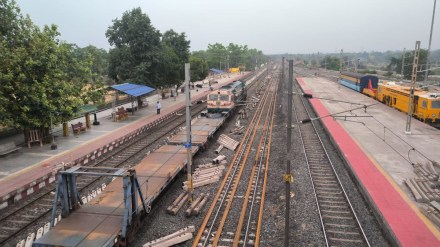In a bid to create a ‘future ready’ Railway system in the country, the Indian Railways has prepared a National Rail plan (NRP)- 2030. The plan aims at formulating strategies based on both operational capacities and commercial policy initiatives to increase modal share in freight transportation.
Objectives of National Rail Plan – 2030
The objective of the National Rail Plan is to create capacity ahead of demand. This would cater to future growth in demand right up to the next two decades i.e. 2050. The NRP will help in identifications of Options, Evaluation and Prioritization of projects. It will also study the deficiencies in the rail infrastructure.
Improvement of Speed over Indian Railways:
The railways has taken several measures to raise the speed of both passenger as well as freight trains in the country. The working towards improvement of speed in trains is a continuous exercise for the railways.
Semi-High Speed rail route in India:-
The national transporter has introduced indigenous semi-high speed trains – Vande Bharat Express on several routes in the last four years. Till July 27, 2023, the railways have launched 50 Vande Bharat train services in the country.
High-speed rail route in India:-
The speeding up of trains is a constant endeavour on the network of Indian Railways. For this, it has identified following routes for future possible development for the high speed rail network in the country.
These are as follows:
- Mumbai-Ahmedabad
- Delhi – Noida – Agra – Kanpur – Lucknow- Varanasi (865 kms)
- Delhi – Jaipur – Udaipur – Ahmedabad (886 kms)
- Mumbai – Pune – Hyderabad (711 kms)
- Chennai – Bangalore – Mysore (435 kms)
- Delhi – Chandigarh – Ludhiana – Jalandhar – Amritsar (459 kms)
- Varanasi-Howrah
Of these, Mumbai – Ahmedabad High Speed Rail (MAHSR) Project is presently undertaken with technical collaboration and financial assistance from the Government of Japan. Recently, National High Speed Rail Corporation Limited (NHSRCL) has awarded the last Civil Package (C3) for 135-km long alignment in Maharashtra.
